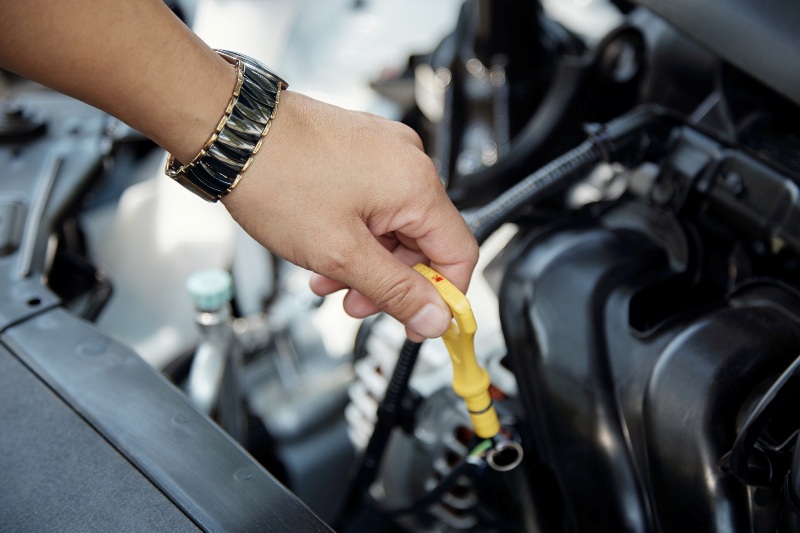
Table of Contents
Introduction
If an engine is the heart of the vehicle then the oil pump is the heart of the engine.
Just like our hearts are one of the key organs in our body that pumps blood throughout our body, a car’s oil pump is also a vital part in sending oil throughout various important parts of the vehicle’s lubricating system.
Needless to say, if our heart, for some reason, stops functioning properly, we experience cardiac arrest. It is just as bad when it comes to oil pump and engine.
If the oil pump fails to function as expected, it brings all sorts of havoc on the engine as well as the vehicle’s overall performance and health.
This is why it is important to know how an oil pump works and how to keep it functioning optimally.
What does an oil pump do?
The main purpose of an oil pump is to circulate the engine oil to various parts such as the bearings, pistons, and camshaft.
The primary reason is to keep these parts lubricated to prevent wear and tear due to friction and generate unwanted heat.
The Oil Pump is the key component of the engine lubricating system. This system must deliver clean oil at the correct pressure and temperature to lubricate all parts of the engine.
Oil due to its viscosity nature also acts as a seal. It helps to cool various major components from overheating.
When there is relative movement between two surfaces, there will be friction, and heat is generated, resulting in an energy loss. To the naked eyes, the peaks and troughs on the surface may not be visible but these surfaces when in contact and move in opposite direction, generate friction and thus produce heat.
The solution is to prevent contact between the surfaces. A film of oil comes to the rescue. It prevents contact and one surface glides over the other. Thus, there would be no direct contact, and friction will be dramatically reduced. Ultimately, it prevents overheating.
Working Principle of an Oil Pump: How does an oil pump work?
In a very simplified way, the working principle is pretty straightforward.
The oil pump draws oil in from the oil sump (oil pan, in US English) through a strainer that is made of wire mesh that filters out larger debris. Then the oil gets pushed through some oil galleries to the crankshaft and camshaft bearings. As it goes through the various parts of the engine, it lubricates them along the way and reduces friction and heat.
However, some key components work together in a car’s lubricating system and it is well worth knowing how.
Key Components of Lubricating System
Oil Sump, Strainer and Pickup Tube
The oil sump or pan is like the reservoir for the oil. This is where it all begins and this is where it also ends. The oil sump is usually situated at the bottom of the car’s engine.
There is a strainer that acts as a filter to keep out any larger debris from getting in.
The oil is drawn by the oil pump through the pickup tubes from the pan and pushes them through some intricate channels called galleries to various engine blocks to lubricate key components.
The Oil Pump and Pressure Controller
The oil pressure is not consistent in all places. Generally, most engines generate about 10 psi per 1000 rpm (revolutions per minute). But it could go as high as 60 psi.
The pressure at the crankshaft journal and bearing could reach hundreds of psi.
A relief valve helps in controlling pressure reaching too much. It opens when pressure exceeds a certain threshold value (typically 50 to 60 psi) and redirects excess oil back into the oil sump.
Filter and Cooling Systems
The oil then passes through a fine paper-made filter that filters out any tiny stray particles that the strainer may fail to remove.
The most commonly found filters are capable of handling particles bigger than 20-30 micrometers (µm), which is about ½ the diameter of human hair. Some high-end filters can filter out even smaller particles ranging from 5-10 µm.
Most modern cars these days also have an oil cooling mechanism, which is like a small radiator that helps cool the oil a bit.
Galleries and Spurt Holes
After going through oil filters, the oil then goes through a gallery of holes and chambers to reach various parts of the engine, supplying much-needed oil for lubricating moving components of the engine and power hydraulic systems of the vehicle.
Oil also acts as a coolant for hot components around the engine.
Deliberate holes are fabricated for oil to reach areas that need cooling or lubrication.
Bearing Journals
The bearing in an engine uses hydrodynamic lubrication. There is a very small clearance between the shaft and the bearing journal.
When the engine is started the shaft is running without lubrication for a short period. When the oil is introduced a thin film of oil is dragged around by the shaft and the shaft is then centered in the bearing housing. This process is known as hydrodynamic lubrication.
Hydraulic Systems
Modern vehicles are equipped with hydraulic valve lifters or variable valve timing (VVT). The valves are electronically controlled by the engine control module (ECM). However, the power comes from the oil coming from the oil pump.
Types of Oil Pumps
There are mainly two types of oil pumps.
The wet sump system has a single oil pump, usually installed next to the crankshaft, whereas the dry sumps have two oil pumps.
The primary one is responsible for pressurizing and distributing oil around the engine.
And the secondary oil pump, often called the scavenge pump, has a higher flow rate than the primary pump.
Conclusion
The oil pump is one of the most important components for the well-being of the engine as a whole for the entire vehicle. However, over time it’s natural for the oil pump to get worn out due to the load it undertakes.
It is recommended to do an oil change every three to five thousand miles. Also, make sure to use premium quality good engine oil.
And when you need an oil pump replacement, make sure to obtain top quality oil pump for the best protection and longevity of the engine of your vehicle.
Author Bio:

Hello! This is Andrew Neilson. I am a professional writer. Basically I am an expert on pump and plumbing related topics. Although I am capable of writing on any topic. My hobby is reading various kinds of books by different writers. Also, I feel interested in exploring new things. Website: https://pumpadvisor.com/


